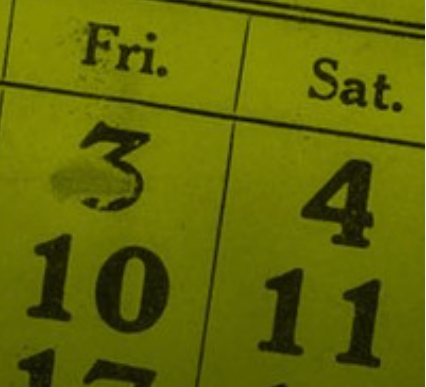1 January: On this day in history
What events happened on 1 January in history? We round up the events, births and deaths…

1 January 404: A monk tackles the gladiators
Telemachus intervenes in an attempt to halt Rome’s bloody public games
By the beginning of the fifth century AD, the gladiatorial games that had once so entranced the Roman crowds were in steep decline. To the disappointment of the connoisseurs, brutal slaughter had gone out of fashion. Under the new state religion, Christianity, the games were seen as a reactionary relic. Attendances were dwindling, the arenas were crumbling and the standard of the fighters was not what it had been.
Then, for the fans, came the worst blow of all. On the first day of AD 404 (though in truth it’s hard to be sure of the exact date), a crowd gathered at one of Rome’s arenas, perhaps the Colosseum, for some good unclean fun. Just as things were getting interesting, a scruffy figure leapt into the arena, rushed to the gladiators and tried to drag them apart. “In the name of Christ, forbear!” he shouted – or so some later accounts claimed.
The protester, it transpired, was an ascetic monk named Telemachus from the eastern part of the empire, who was visiting Rome for some purpose of his own. Appalled by the “abominable spectacle”, he was determined to stop it. The fans, though, were not happy. According to the church historian Theodoret of Cyrrhus, writing just a little after these events, the crowds reacted violently to Telemachus’s intervention, stoning him to death. And that seemed to be the end of that.
But it wasn’t. When the young (and extremely God-fearing) emperor Honorius heard about the monk’s fate, he decided that enough was enough. By his edict, gladiatorial games were banned. So were trousers, interestingly – but that’s another story. | Written by Dominic Sandbrook
- Read more about famous gladiators
1 January 1540: Henry VIII meets his bride-to-be, Anne of Cleves
The rambunctious king discovers a fatal incompatibility
As the winter sun dipped towards the horizon on New Year’s Day 1540, Anne of Cleves stood at the window of the Bishop’s Palace in Rochester. She had been on the road for weeks, having pledged to become the fourth wife of King Henry VIII.
Suddenly, footsteps sounded on the stairs and a man appeared in the doorway: Sir Anthony Browne, master of the king’s horse, who had left Greenwich earlier that day.
Bored of waiting for his bride, Henry had decided to welcome her with what he considered a hilarious prank. He and a group of friends rode to Rochester in matching hoods and capes, like Robin Hood and his Merry Men. Out of politeness, though, he sent Browne ahead to warn her.
As Anne stared at Browne in bewilderment, he knew she was wrong for Henry. He had, he later recalled, never been “more dismayed in all his life”.
Then the door burst open and men in multicoloured hoods leapt into the room, roaring with laughter. Anne said nothing, but gave a nervous half-smile. The largest newcomer bowed low and held out a gift – from the king himself, he said grandly. Baffled, Anne took it. Then she turned away.
More like this
There was a dreadful silence. The large man stood there, flummoxed, then strode out of the room. A few moments later he returned without his hood. Only then did Anne realise he was her future husband.
She tried to smile, but it was too late. On the barge back to Greenwich, Henry sulked in silence before calling for Browne. “I see nothing in this woman as men report of her,” he said bitterly. “And I marvel that wise men would make such report as they have done.”
Browne said nothing. He knew the marriage was doomed. | Written by Dominic Sandbrook
1 January 1611
Ben Johnson's masque, Oberon, the Fairy Prince, was performed at Whitehall. Inigo Jones designed the scenery and Prince Henry, the eldest son of James I, took the title role.
1 January 1773: Anti-slavery hymn ‘Amazing Grace’ is heard for the first time
A former slave ship worker sets his search for God to music
When the villagers of Olney, Buckinghamshire assembled for their regular prayer meeting on New Year’s Day 1773, few could have imagined that they were about to hear the first performance of a hymn that has become famous the world over.
Most were poor and illiterate, scratching a living from making lace. They were lucky, however, in their curate, a much-travelled man called James Newton. Born in Wapping in 1725, he had served in the Royal Navy and had worked for many years on a slave ship. During a terrible storm, Newton had cried out to God for help, and afterwards he underwent a conversion experience.
After abandoning the slave trade and training as a priest, Newton was offered the curacy of Olney. There he befriended a failed writer called William Cowper, who had flirted with suicide and since undergone a similar born-again experience. Together they wrote hymns for the village’s regular prayer meetings, usually with simple lyrics that would appeal to the locals.
In the final days of 1772 they produced something special: a moving account of Newton’s conversion, in the direct language of evangelical Protestantism. “I once was lost, but now am found,” Newton wrote, “Was blind, but now I see.” The title was ‘1 Chronicles 17: 16-17, Faith’s review and expectation’. Today it is one of the world’s best-known songs, with versions by, among others, Elvis Presley and Johnny Cash. It even features in Star Trek II: The Wrath of Khan. We know it, of course, as ‘Amazing Grace’. | Written by Dominic Sandbrook
1 January 1812
Shute Barrington, the bishop of Durham, sent troops from Durham Castle to break up a strike by miners at collieries owned by the dean and chapter of Durham Cathedral at Chesterle Street.
1 January 1909
Following the passing of the Old Age Pension Act in the previous August, half a million people receive Britain's first national noncontributory old age pension. Payments of between one shilling and five shillings a week are made to men and women of over 70 years of age with an annual income of under £31 a year. Recipients have to be of "good character". Those who have habitually failed to work or who have been imprisoned in the last ten years are not entitled to the pension.
1 January 1948
Britain's four largest railway companies – Great Western; London, Midland and Scottish; London and North Eastern; and Southern – are nationalised to form British Railways.
- Previous: 31 December
- Next: 2 January


Start the year with a subscription to BBC History Magazine - £5 for your first 5 issues!
As a print subscriber you also get FREE membership to HistoryExtra.com worth £34.99 + 50% London Art Fair 2024 Tickets




